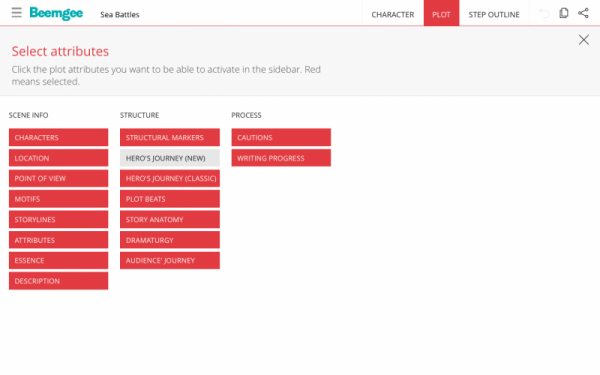Story Paradigms, Plot Beats
Inciting Incident, Belly of the Whale, Love Scene … You may well have certain specific events in your story which might have names like crisis, the midpoint, the resolution, plot points, or campfire scene.
In a bunch of new attributes focusing on SCENE TYPES, you assign such scene types to each of your plot events.
This provides you with an overview of the dramaturgy of your story by allowing you to check the formal aspects of your plot structure. The terms used to describe the scene types are grouped according to category, which is particularly helpful if you work with a paradigm, such as The Hero’s Journey or Blake Snyder’s Save The Cat!
How ever you work, whichever is your favoured plotting process, you can therefore do it in Beemgee. The additional plot attributes which you can use to tag scene types are:
- Dramaturgy
- Hero’s Journey (new)
- Hero’s Journey (classic)
- Plot Beats
- Story Anatomy
- Audience’ Journey
Each of these attributes features a list of scene types which you can assign to your individual plot events.
So whether you want to make a note of which scene is the midpoint and which the climax, etc., now you can. Or maybe you work with the hero’s journey, or like to use beat sheets? Now all this is included in Beemgee.
What’s more, all the plot attributes are fully searchable in the filter and highlight pull down.
Just a friendly pointer: You really do not need to use all of the attributes. Every author has a unique way of preparing and developing their material. We have included these new attributes so that you can choose the ones that most suit you. Our advice is to hide the ones you don’t need in the attribute overview:


